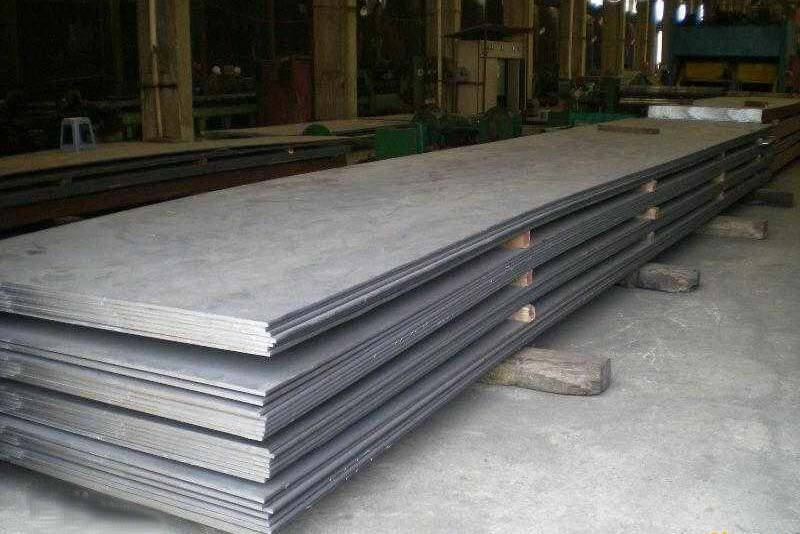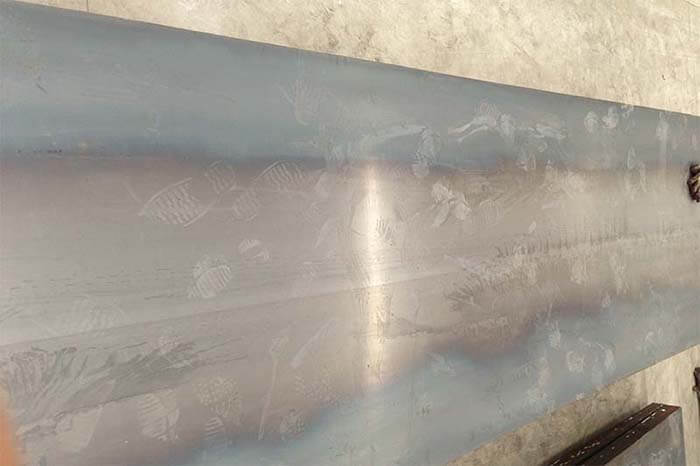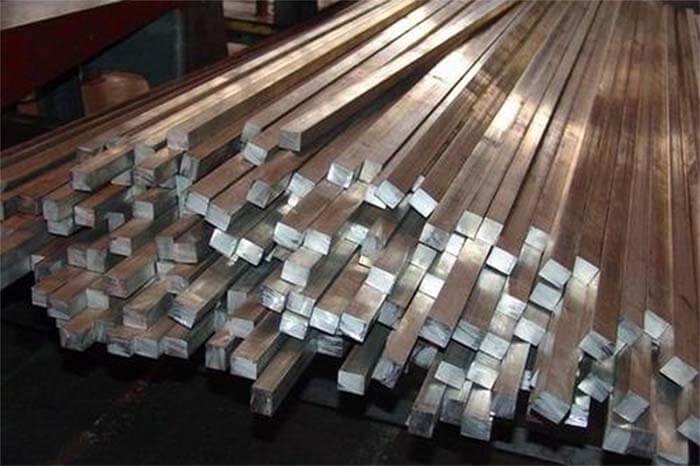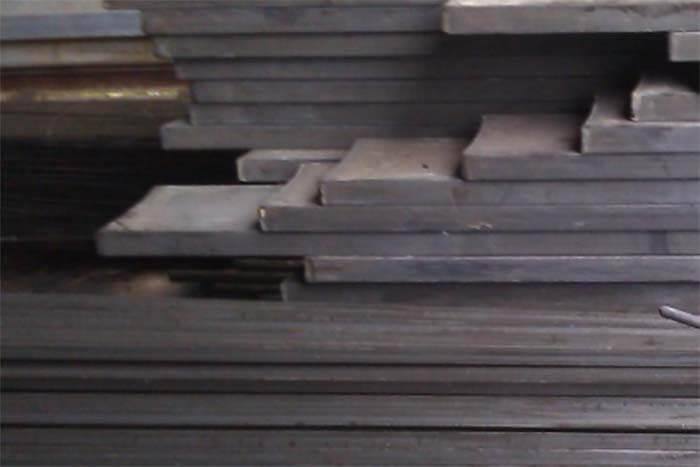
What is 45# Steel?
45# steel is generally referred to as 45-grade steel, a high-quality carbon structural steel, characterized by higher strength and resistance to deformation compared to ordinary A3 steel.
What does 45# steel material number mean?
45# steel’s chemical composition of carbon content is 0.42~0.50%, that is, the carbon content of 0.45% up and down, in the GB standard is the amount of carbon content to name the steel number, so the carbon content in 0.45% of the steel named 45# steel.
What are the 45# steel mechanical properties?
GB/T699-1999 standard of 45 # steel recommended heat treatment temperature of 850 ℃ normalized, 840 ℃ quenching, 600 ℃ tempering, to achieve the performance of grade 45 steel yield strength ≥ 355MPa
GB/T699-1999 standard 45# steel tensile strength of 600MPa, yield strength of 355MPa, elongation of 16%, section shrinkage of 40% modulation treatment hardness specifications size.
What is the hardness of 45 # steel?
The hardness before quenching is approximately between HRC20 and HRC30, after tempering the hardness is approximately HRC50, in the application, the highest hardness can reach HRC55.
The hardness is greater than 45 steel, there are 304 steel, CR12 steel, and CR13 steel, 304 steel is stainless steel, the hardness is about HRC40, CR12 steel hardness is about HRC58, and CR13 steel hardness is about HRC48-50.
What is the 45# steel equivalent?
45# steel is called in GB45 in China, 45# steel equivalent JIS: S45C, ASTM: 1045, 080M46, DIN: C45.
45# steel is also called oil steel. The market is mostly hot-rolled; cold-rolled specifications are between 1.0 and 4.0mm (mm). The steel is generally cold plastic, annealed, and normalized slightly better than when tempered, with higher strength and better machinability.
How to read steel-grades?
Carbon steels and alloy steels are designated a four-digit number, whereby the first digit indicates the main alloying element(s), the second digit indicates tg (top grade) element(s), and the last two digits indicate the amount of carbon, in hundredths of a percent (basis points) by weight.
How is steel classified?
Steel adjusts the amount of carbon (C) to improve the mechanical properties of steel, therefore, according to the level of carbon content, such steel can be divided into.
Low carbon steels – with a carbon content generally less than 0.25%, such as 10, or 20 sheets of steel, etc.
Medium carbon steel – the carbon content is generally between 0. 25 and 0. 60%, such as 35, 45 steel, etc.
High carbon steel – the carbon content is generally greater than 0.60%.
In addition to containing carbon (C) elements in such steel and for deoxidation and contains a certain amount of silicon (Si) (generally not more than 0.40%), manganese (Mn) (generally not more than 0.80%, higher can be to 1.20%) alloying elements, does not contain other alloying elements (except residual elements). Such steels must ensure both chemical composition and mechanical properties.
Steel containing sulfur (S), and phosphorus (P) impurity element content is generally controlled at 0.035% or less, respectively, known as high-quality steel, senior quality steel, and special quality steel.

What is 45# steel structural steel composition?
45# steel chemical composition element ratio (%).
Carbon C: 0.42 to 0.50.
Chromium Cr: ≤ 0.25.
Manganese Mn: 0.50 to 0.80.
Nickel Ni: ≤ 0.25.
Phosphorus P:≤0.035.
Sulphur S: ≤0.035.
Silicon Si: 0.17~0.37
Mechanical properties
σb\MPa:≥600
σs\MPa:≥355
δ5\%:≥16
ψ\%:≥40
Hardness\HB:≤197
Is 45# steel good?
What are the advantages of 45# steel?
- It is a high-quality carbon structural steel, with a carbon content of 0.4% or more, not high hardness is easy to cut, usually after the hot rolling or cold rolling forming.
It has a tensile strength of 686 MPa and a grade 45 steel yield strength of 490 MPa.
- The hardness after tempering is between HRC20 and HRC30 while ensuring superior mechanical properties, the surface is not wear-resistant and the machinability is reduced.
- Quenched hardness in HRC50, up to HRC55, but will reduce the mechanical properties.
- After carburizing treatment can make the surface wear resistance increases.
- Generally, it is tempered and quenched to increase the surface hardness, making it have good overall performance.

What are the disadvantages of 45# steel?
- 45# steel has certain requirements for the temperature of the water and water inlet during construction, so it should be considered from various aspects when it is used.
- Due to the hard strength of 45# steel, it is still difficult to reduce the strength by other methods during construction.
- 45# steel is also more expensive, and in the construction of materials, will incur more material costs.
What is the heat treatment process of 45# steel and 40Cr steel tempering?
Tempering is a dual heat treatment of quenching and high-temperature tempering, the purpose of which is to make the workpiece has good overall mechanical properties.
Tempered steel has two major categories of carbon tempered steel and alloy tempered steel, whether it is carbon steel or alloy steel, its carbon content control is relatively strict.
If the carbon content is too high, the strength of the tempered workpiece is high, but not enough toughness, such as low carbon content, toughness increased, and insufficient strength. In order to make the tempered parts get a good overall performance, the general carbon content control is 0.30 ~ 0.50%.
Tempering quenching, the entire section of the workpiece is required to quench through so that the workpiece gets a fine needle quenching martensite-based microstructure. By high-temperature tempering, to get a uniform tempering otherwise-based microstructure.
Small plants can not be engaged in metallographic analysis per furnace, generally only for hardness testing, which means that the hardness after quenching must reach the quenching hardness of the material, tempered hardness according to the requirements of the figure to check.
Workpiece quenching operation must be strictly in accordance with the process documents, we are only the operation of the process of how to implement the process to make some observations.
45 # steel does not use the thermal process of carburizing quenching water.
45 # steel after tempering parts have good overall mechanical properties, widely used in a variety of important structural parts, especially those working under alternating negative connecting rods, bolts, gears, shafts, etc. But the surface hardness is low, and not wear-resistant. Available quenching + surface quenching to improve the surface hardness of the parts.
Carburizing treatment
Generally used for the surface wear resistance, the core impact resistance of heavy-duty parts, its wear resistance than the quenching + surface quenching high. Its surface carbon content is 0.8-1.2%, and the core is generally at 0.1 – 0.25% (0.35% is used in special cases). After heat treatment, the surface can obtain a very high hardness (HRC58-62), and the core is low hardness and impact resistant.
If carburized with 45# steel, the core will appear hard and brittle martensite after quenching, losing the advantages of carburizing treatment. Now the use of carburizing process materials, the carbon content is not high, and to 0.30% core strength can already reach very high, the application is not common. Can be quenched + a high-frequency surface quenching process, wear resistance is slightly worse than carburizing.
45# steel is not quenched hardness of less than HRC28, is relatively soft, and is not wear-resistant.
45 # steel also does not use surface nitriding treatment, although the surface hardness can be increased a lot, the base material will be very low hardness.
Quenching of 45# steel
45# steel is a medium carbon structural steel, cold and hot processing properties are good, mechanical properties are good, and low price, and wide sources, so it is widely used. Its biggest weakness is low hardenability, large cross-sectional size, and more demanding workpieces should not be used.
The quenching temperature of 45# steel at A3 + (30~50) ℃, in practice, is generally taken as the upper limit. High quenching temperature can make the workpiece heating speed up, surface oxidation is reduced, and can improve work efficiency. In order to make the workpiece austenite homogenization, you need sufficient holding time.
If the actual furnace charge is large, it is necessary to extend the holding time. Otherwise, the phenomenon of insufficient hardness due to uneven heating may occur.
But the holding time is too long, and will also appear coarse grains, and oxidation decarburization has serious drawbacks, affecting the quality of quenching. We believe that if the furnace charge is greater than the provisions of the process documentation, heating and holding time needs to be extended by 1/5.
Because of the low hardenability of 45# steel, it should be used to cool a large rate of 10% brine solution. After the workpiece into the water should be quenched, but not cold penetration, if the workpiece is in the brine cold penetration, it is possible to make the workpiece crack.
This is because when the workpiece is cooled to about 180 ℃, austenite quickly transformed into martensite caused by excessive tissue stress. Therefore, when the quenching workpiece is fast cooling to the temperature region, should take the slow cooling method.
As the water temperature is difficult to grasp, the operation must be based on experience, when the workpiece in the water shaking stop, you can come out of the water-air cooling (such as oil cooling better).
In addition, the workpiece in the water should move rather than static and should be in accordance with the geometry of the workpiece, for regular movement. Static cooling medium plus static workpiece, resulting in uneven hardness, uneven stress and deformation of the workpiece, and even cracking.
The hardness of the quenched 45# steel tempered parts should reach HRC56~59, the cross-section may be lower, but not lower than HRC48, otherwise, it means that the workpiece is not completely quenched, and the organization may appear soxhite or even ferrite organization, this organization through tempering, still retained in the matrix, can not achieve the purpose of tempering.
The high-temperature tempering of 45# steel after quenching, the heating temperature is usually 560 ~ 600 ℃, the hardness requirements of HRC22 ~ 34. Because the purpose of tempering is to get a comprehensive mechanical property, the hardness range is relatively wide.
When there is a hardness requirement, the tempering temperature should be adjusted as required to ensure hardness.
Such as some shaft parts require high strength, hardness requirements are high; and for some gears, with keyway shaft parts, because after tempering, but also milling, and insert processing, hardness requirements are lower.
Tempering holding time, depends on the hardness requirements and the size of the workpiece, we believe that the hardness after tempering depends on the tempering temperature, and tempering time is not much, but must be tempered through, the general workpiece tempering holding time is always more than one hour.
What are the 45# steel uses?
45# steel has good cutting performance, high hardness after quenching, good toughness, and certain wear resistance after tempering, and is widely used in the manufacture of structural parts and plastic molds.
45# steel is widely used in machinery, shaft parts, mold clamps, etc.
Shaft parts are one of the typical parts often encountered in machines. It is mainly used to support transmission parts.
When not heat-treated: HB≤229.
Heat treatment: normalized.
Impact work: Aku≥39J.
High strength, plasticity, and toughness are still good.
45# steel plate after quenching without tempering before, hardness greater than HRC55 (up to HRC62) for qualified. After heat treatment, re-tempering can reach HRC42-46, so as to ensure its good mechanical properties, but also to get the surface hardness requirements.
45# steel in the field of mold repair
45# steel for the mold welding material model: CMC-E45
45# steel plate is used to make small cross-sectional quenched parts that bear large loads and large normalized parts with small stresses, as well as surface quenched parts that do not require high strength at the heart, such as tips, guide pillars, watch pins, and other parts.
45# steel is a common material for shaft parts, it is cheap after tempering (or normalizing), can get better cutting properties, and can obtain higher strength and toughness and other comprehensive mechanical properties, quenched surface hardness up to 45 ~ 52HRC.
40Cr and other alloys structural steel are suitable for medium precision and high-speed shaft parts, such steel after quenching and tempering, has a good overall mechanical property.
Bearing steel GCr15 and spring steel 65Mn, after quenching and surface high-frequency quenching, the surface hardness can reach 50 ~ 58HRC, and has a high fatigue resistance and good wear resistance, can be manufactured with the high precision shaft.
Precision machine tool spindle (such as grinding wheel shaft, or coordinate boring machine spindle) can choose 38CrMoAIA nitride steel. This steel after tempering and surface nitriding, not only obtains a very high surface hardness, and can maintain a softer core, so good impact resistance toughness. Compared with carburizing and quenching steel, it has the characteristics of little heat treatment deformation and higher hardness.
45# steel is widely used in mechanical engineering, and this steel has good mechanical properties. However, it is a medium-carbon steel, and the hardening properties are not good. 45 steel can be hardened to HRC 42~46.
If you need surface hardness and want to play with 45# steel with superior mechanical properties, often 45# steel surface quenching (high-frequency quenching or direct quenching), you can get the required surface hardness.

What is the difference between 40Cr and 45# steel?
What is 40Cr steel?
Meaning: 40Cr means 40 chromium, Cr is the abbreviation of chrome (chromium), 40Cr steel belongs to the alloy steel, and modulation of the hardness is about HB301-340.
What are 40cr steel properties?
Features: chromium can improve the strength and tempering stability of steel, and increase the hardenability of steel so that it has mechanical properties more superior.
What are 40cr steel uses?
Use: In the machinery manufacturing industry, 40Cr steel is one of the most widely used and most commonly used steel.
Mainly used in the manufacture of various mechanical parts, such as gears, shafts, top bushings, etc., can also be used for the manufacture of high surface hardness, wear-resistant but no large impact parts, such as spindles, crankshafts, screws, intake valves, etc., It can also be manufactured to withstand heavy loads of various parts and so on.
The difference between 40Cr and 45# steel
1. Carbon content
40Cr steel carbon content of 0.37% to 0.44%, slightly lower than the 45# steel 0.42% to 0.50%.
2. Price
The price of 40Cr steel is much higher than 45# steel, about 1.5 times the price of 45# steel. For economic reasons, can not use 40Cr steel will not be used.
3. Hardenability
The main role of Cr is to improve the hardenability of steel, in some processing, 40Cr steel hardness, strength, and other mechanical properties are significantly higher than 45# steel.
4. Cracking tendency
Due to the hardenability, 40Cr in the quenching of internal stress is also greater than 45# steel, in the same environment, 40Cr steel workpiece cracking tendency is also greater than the 45# steel workpiece.
40Cr is 40 chromium, it belongs to the alloy steel, hardness is about HB301-340, and 45# steel compared to 40Cr carbon content is lower, more expensive, mechanical properties are better, the tendency to crack is also greater than 45# steel, is the machinery manufacturing industry, the most widely used, the most commonly used one of the classes of steel.
45# steel vs 304 stainless
What is 304 stainless steel?
304 is general-purpose stainless steel with, high-temperature resistance of 800 ℃, good processing function, and high resistance characteristics, widely used in industry and furniture decoration profession and food medical requirements of corrosion resistance and molding outstanding equipment and machine parts.
In order to adhere to the inherent corrosion resistance of stainless steel, the steel must contain more than 18% chromium, and more than 8% nickel content. 304 stainless steel is a trademark of stainless steel produced in accordance with ASTM specifications.
1. Hardness comparison
Hardness depends on the carbon content is high, because 304 stainless steel’s carbon content as long as 0.12%, far less than 45# steel’s 0.45%, so the hardness after heat treatment is not as hard as 45# steel. 304 stainless steel’s primary advantage is not rust, not in strength and hardness.
2. Price comparison
To price 304 stainless steel is 3 times more expensive than the 45# steel, to use each according to the strengths.
Stainless steel corrosion resistance does not rust, but the strength and hardness can not only do decorative or strength requirements are not high parts, 45# steel easy to rust, corrosion resistance is poor but the strength and hardness after heat treatment has a very good function, so the general parts are selected for this steel, the two materials have their own strengths.
The hardness of all steel is achieved by heat treatment, that is, different heat treatments can be used to make the metal achieve a different hardness. But high hardness is not necessarily high strength, for example, not steel white cast iron, hardness reached unimaginable, and very brittle, so its use is not much.
Summary
For tensile strength 45# steel is strong; For hardness 45# steel is strong; And for wear resistance 304 is strong.
How to identify the authenticity of the 45# steel material?
- By commonly used grinding wheel grinding, look at the color of the spark, white is high carbon steel, such as 45# steel, and red is A3 steel.
- 45# steel and Q235 material on the stone grinding a grinding, easy to wear off is Q235.
- Knock with a hammer, 45# steel traces than Q235 (A3) traces much shallower, because Q235 is much softer than 45# steel.
Besides the What is 45# Steel Material article, you may also be interested in the below.
Stamping Die Design Guidelines, 75 Taboos And Rules
Mechanical Design Steps and 525 Taboos
6 Common Plastic Injection Molding Process Techniques
What is Multi-material Injection Molding?
How to Increase the Brightness of ABS Plastic Products?
Hot Runner Injection Molding Defects and Troubleshooting
